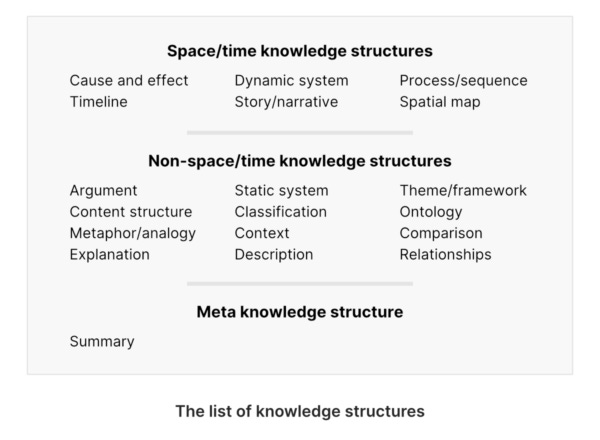An introduction to the concept of knowledge structures
Understanding the underlying structures of knowledge and communication
I’ve just finished an article explaining the concept of knowledge structures. The concept provides a very useful way of understanding the structures underlying what we know and how we communicate.
You can find the summary of the article below. Alternatively you can read the whole article here.
As ever, please get in touch by replying to this email if you have any comments.
Francis
Summary
Why the concept of knowledge structures is important: there are a limited number of standard structures that we use to understand the world and to order our knowledge. I call these structures ‘knowledge structures’. Having an explicit concept of knowledge structures allows us to create an x-ray of underlying order (and sometimes disorder) that we might otherwise miss.
What is a knowledge structure?: knowledge structures can be defined as ‘arrangements of knowledge elements’. Knowledge elements can, in turn, be defined as ‘the constituent parts of what we are thinking about or discussing’.
The different categories and types of knowledge structures: knowledge structures can be divided into three categories:
Space/time: knowledge structures related to space and/or time
Non-space/time: knowledge structures that aren’t related to space or time
Meta: the only meta knowledge structure is the summary. It is not a knowledge structure in itself but represents a condensed version of other knowledge structures.
What differentiates knowledge structures?: knowledge structures are differentiated from each other by the nature of the relationship between the individual knowledge elements that make them up.
Key distinctions: there are two key distinctions:
Organising/supporting knowledge structures: organising structures are the higher-level knowledge structures that organise and give meaning to the lower-level supporting structures
Organisation/content knowledge structures: knowledge structures can relate both to the organisation of a book and to the content of a book.
In the next article, which is coming soon, I will look at how the concept of knowledge structures can be used practically.
Francis Miller



